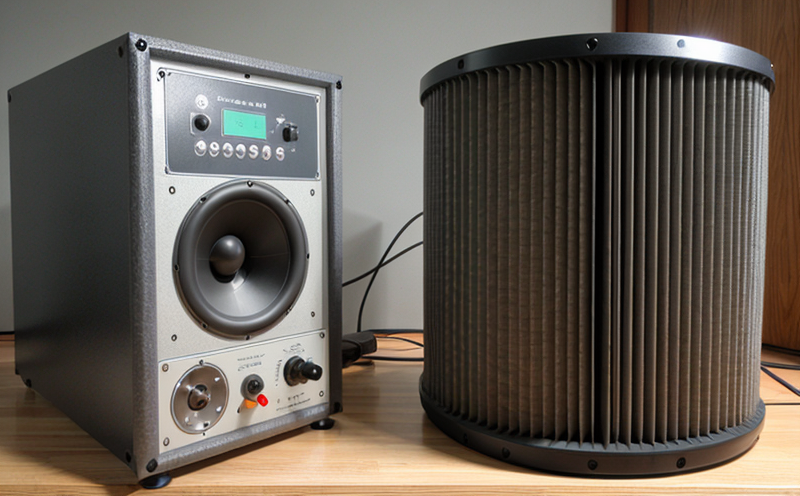IEC 60068-2-6 Sine Vibration Environmental Testing of Ship Components
The IEC 60068-2-6 sine vibration test is a critical environmental testing procedure used to evaluate the durability and reliability of ship components under simulated real-world conditions. This standard is widely recognized as an essential tool for ensuring that marine equipment can withstand the harsh and varied environments encountered at sea.
The sine vibration test simulates the random nature of ocean-induced vibrations, which are a significant factor in the design and operational integrity of shipboard systems. By subjecting components to controlled sinusoidal motion within specified frequency ranges, this method assesses the ability of materials and assemblies to maintain their functionality under dynamic loading conditions.
This testing is particularly important for critical components such as engine mounts, propeller shafts, and electronic instrumentation. The test parameters are meticulously defined in IEC 60068-2-6, ensuring that the results are consistent and repeatable across different laboratories. This standardization facilitates global trade by providing a common benchmark for quality assurance.
The sine vibration test typically involves placing the component or assembly on a shaker table, which generates controlled sinusoidal motion. The frequency range can vary depending on the specific application but generally spans from 10 Hz to 250 Hz. The amplitude of vibration is also carefully controlled and may be adjusted based on the component's size and expected use.
Testing is conducted in both single-axis and multi-axis configurations, with multiple cycles applied to simulate real-world conditions more accurately. This multi-axis approach ensures that all potential modes of failure are addressed, particularly when components are subject to complex loading scenarios during ship operation.
The test typically lasts for 24 hours or longer, depending on the component's size and complexity. During this time, data is collected using a variety of sensors, including accelerometers, strain gauges, and temperature probes. This comprehensive monitoring allows engineers to track any changes in performance parameters during testing.
Upon completion of the test, components are visually inspected for signs of damage or degradation. Additional tests may be conducted if anomalies are detected during sine vibration testing. These follow-up assessments ensure that the component's integrity has been maintained throughout the entire test cycle.
| Component Type | Testing Scenario |
|---|---|
| Engine Mounts | Evaluation of structural integrity under dynamic loads. |
| Propeller Shaft | Assessment of wear and fatigue resistance. |
| Electronics Cabinets | Verification of vibration-induced signal interference. |
| Hull Structural Panels | Determination of structural integrity under varying sea states. |
| Navigation Systems | Evaluation of operational stability and accuracy in harsh conditions. |
| Rudder Systems | Assessment of mechanical performance under cyclic loading. |
| Hydraulic Pumps | Evaluation of fluid dynamics and seal integrity. |
| Crane Systems | Testing for fatigue resistance in critical lifting applications. |
The sine vibration test is an integral part of the broader quality assurance process for marine equipment. By incorporating this testing into the design and manufacturing stages, manufacturers can significantly reduce the risk of premature failure or operational downtime during service.
In conclusion, IEC 60068-2-6 sine vibration environmental testing is a cornerstone of modern ship component development. Its rigorous standards ensure that marine equipment not only meets but exceeds industry expectations for reliability and durability. This testing is essential for maintaining the safety and efficiency of maritime operations worldwide.
Industry Applications
- Mechanical Engineering
- R&D Departments
- Marine Vessel Builders
- Shipyard Maintenance Teams
- Regulatory Compliance Officers
- Quality Assurance Specialists
- Product Design Engineers
- Safety Inspectors
The IEC 60068-2-6 sine vibration test is particularly relevant for industries where equipment reliability and durability are paramount. By subjecting components to controlled environmental conditions, this testing ensures that marine equipment can withstand the rigors of ocean travel.
For mechanical engineers involved in product development, this test provides valuable insights into potential areas of improvement. R&D departments can use sine vibration data to refine designs and materials for greater resilience. Marine vessel builders rely on these tests to ensure their products meet stringent international standards. Shipyard maintenance teams benefit from consistent testing protocols that help identify wear patterns early.
Regulatory compliance officers play a crucial role in ensuring that all components adhere to relevant standards like IEC 60068-2-6. Quality assurance specialists use these tests as part of their comprehensive evaluation processes. Product design engineers leverage sine vibration data to optimize component performance and reduce the risk of failure.
Safety inspectors are particularly interested in the results of this testing, as it helps ensure that all marine equipment meets the highest safety standards. By incorporating IEC 60068-2-6 into their inspection procedures, they can maintain a high level of operational safety on vessels.
Eurolab Advantages
At Eurolab, we pride ourselves on offering the most comprehensive and accurate IEC 60068-2-6 sine vibration testing services in the industry. Our state-of-the-art facilities ensure that all tests are conducted under controlled conditions that replicate real-world oceanic environments.
We employ highly skilled engineers with extensive experience in marine equipment testing, ensuring that each test is executed to the highest standards. Our commitment to accuracy and precision is further enhanced by our use of cutting-edge instrumentation and software solutions.
Our clients benefit from a full suite of services, including detailed reports and recommendations for improvement based on test results. We also provide training sessions for quality managers, compliance officers, and R&D engineers, helping them to better understand the intricacies of this testing method.
At Eurolab, we are committed to delivering reliable and repeatable test results that meet or exceed industry standards. Our expertise in marine equipment testing ensures that clients can trust us with their most critical components.





